Original link: http://tecdat.cn/?p=24498
In this example, we consider Markov transformation stochastic volatility model.
statistical model
Give Way  Are dependent variables and
Are dependent variables and  Unobserved log volatility
Unobserved log volatility  The stochastic volatility model is defined as follows
The stochastic volatility model is defined as follows 


Zone variable  Following a two-state Markov process with transition probability
Following a two-state Markov process with transition probability

 Represents the normal distribution of the mean
Represents the normal distribution of the mean  And variance
And variance  .
.
BUGS language statistical model
Contents of file "ssv.bug":
file = 'ssv.bug'; % BUGS Model file name
model
{
x\[1\] ~ dnorm(mm\[1\], 1/sig^2)
y\[1\] ~ dnorm(0, exp(-x\[1\]))
for (t in 2:tmax)
{
c\[t\] ~ dcat(ifelse(c\[t-1\]==1, pi\[1,\], pi\[2,\]))
mm\[t\] <- alp\[1\] * (c\[t\]==1) + alp\[2\]*(c\[t\]==2) + ph*x\[t-1\]install
- Download the latest version of Matlab
- Unzip the archive into a folder
- Add program folder to Matlab search path
addpath(path)
General settings
lightblue
lightred
% Seed the random number generator for repeatability
if eLan 'matlab', '7.2')
rnd('state', 0)
else
rng('default')
endLoad models and data
model parameter
tmax = 100; sig = .4;
Parse and compile BUGS model and sample data
model(file, data, 'sample', true); data = model;
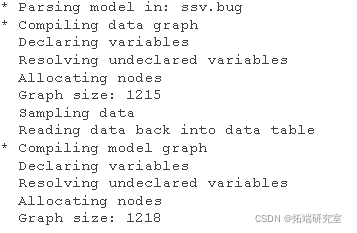
Draw data
figure('nae', 'Lrtrs')
plot(1:tmax, dt.y)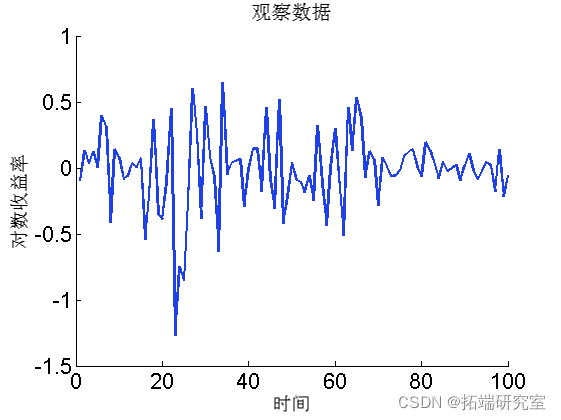
Biips sequence Monte Carlo SMC
Run SMC
n_part = 5000; % Particle number
{'x'}; % Variables to monitor
smc = samples(npart);
Algorithm diagnosis.
diag (smc);

Drawing smoothing ESS
sem(ess) plot(1:tmax, 30*(tmax,1), '--k')
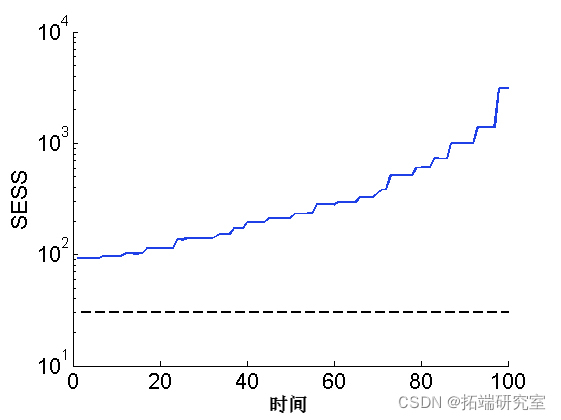
Paint weighted particles
for ttt=1:tttmax va = unique(outtt.x.s.vaues(ttt,:)); wegh = arrayfun(@(x) sum(outtt.x.s.weittt(ttt, outtt.x.s.vaues(ttt,:) == x)), va); scatttttter(ttt\*ones(size(va)), va, min(50, .5\*n_parttt*wegh), 'r',... 'markerf', 'r') end
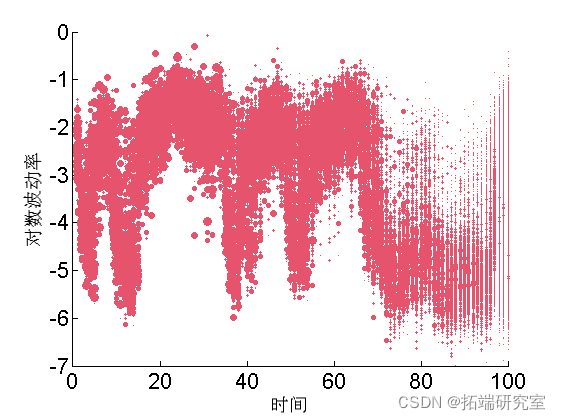
Summary statistics
summary(out, 'pro', \[.025, .975\]);
Mapping filter estimation
mean = susmc.x.f.mean;
xfqu = susmc.x.f.quant;
h = fill(\[1:tmax, tmax:-1:1\], \[xfqu{1}; flipud(xfqu{2})\], 0);
plot(1:tmax, mean,)
plot(1:tmax, data.x_true)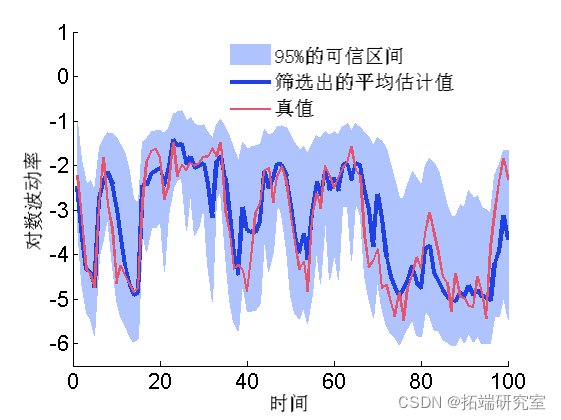
Mapping smoothing estimation
mean = smcx.s.mean; quant = smcx.s.quant; plot(1:t_max, mean, 3) plot(1:t\_max, data.x\_true, 'g')
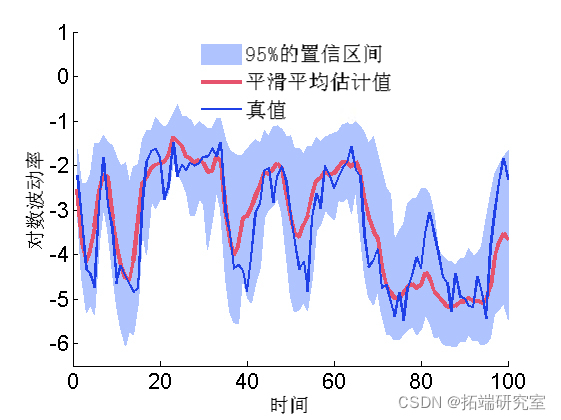
Marginal filtering and smoothing density
kde = density(out); for k=1:numel(time) tk = time(k); plot(kde.x.f(tk).x, kde.x.f(tk).f); hold on plot(kde.x.s(tk).x, kde.x.s(tk).f, 'r'); plot(data.xtrue(tk)); box off end
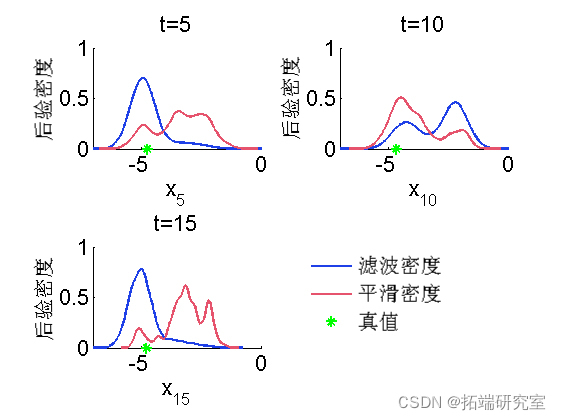
Biips particle independent metropolis Hastings
PIMH parameters
thi= 1; nprt = 50;
Running PIMH
init(moel, vaibls); upda(obj, urn, npat); % Pre burn iteration sample(obj,... nier, npat, 'thin', thn);

Some summary statistics
summary(out, 'prs');
Post mean and quantile
mean = sumx.man; quant = su.x.qunt; hold on plot(1:tax, man, 'r', 'liith', 3) plot(1:tax, xrue, 'g')
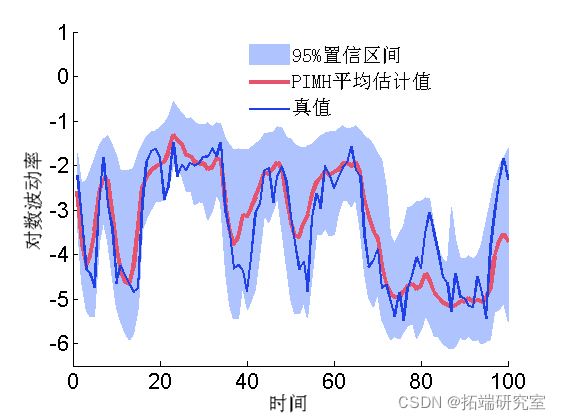
Trace of MCMC samples
for k=1:nmel(timndx) tk = tieinx(k); sublt(2, 2, k) plot(outm.x(tk, :), 'liedh', 1) hold on plot(0, d_retk), '*g'); box off end
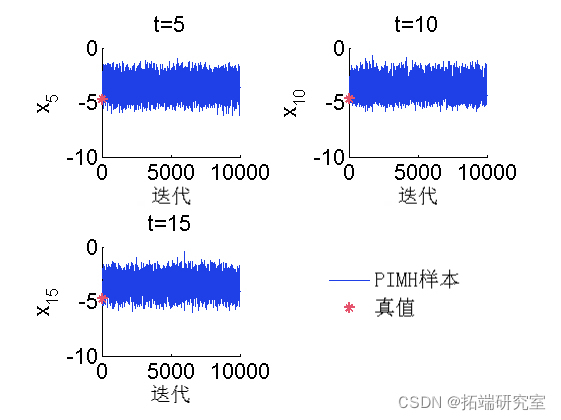
A posteriori histogram
for k=1:numel(tim_ix) tk = tim_ix(k); subplot(2, 2, k) hist(o_hx(tk, :), 20); h = fidobj(gca, 'ype, 'ptc'); hold on plot(daau(k), 0, '*g'); box off end
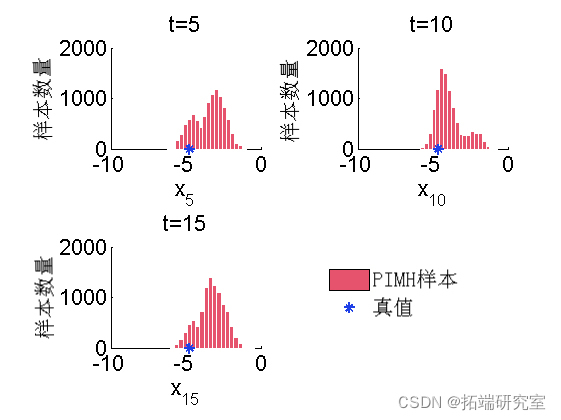
A posteriori kernel density estimation
pmh = desity(otmh); for k=1:numel(tenx) tk = tim_ix(k); subplot(2, 2, k) plot(x(t).x, dpi.x(tk).f, 'r'); hold on plot(xtrue(tk), 0, '*g'); box off end
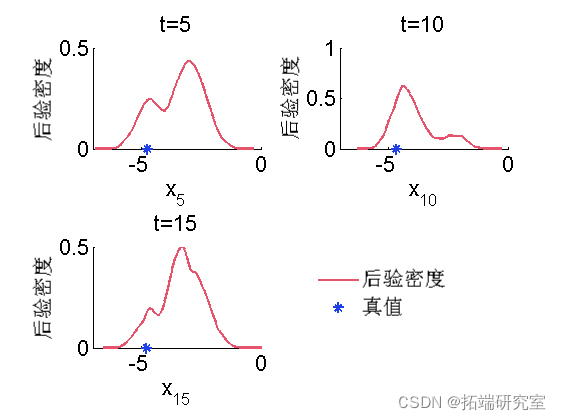
Biips sensitivity analysis
We want to study the sensitivity to parameter values 
Algorithm parameters
n= 50; % Particle number
para = {'alpha}; % We want to study the parameters of sensitivity
% Value grid of two components
pvs = {A(:, B(:';Run sensitivity analysis using SMC
smcs(modl, par, parvlu, npt);

Plot log marginal likelihood and penalty log marginal likelihood rate
surf(A, B, reshape(ouma_i, sizeA) box off
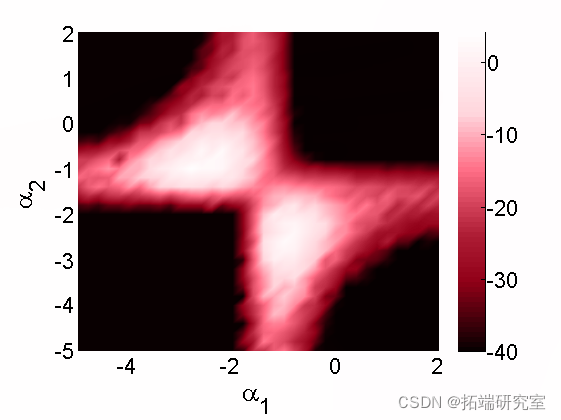

Most popular insights
1.Simulation of hybrid queuing stochastic service queuing system with R language
2.Using queuing theory to predict waiting time in R language
3.Implementation of Markov chain Monte Carlo MCMC model in R language
4.Markov Regime Switching Model in R language Model ")
5.matlab Bayesian hidden Markov hmm model
6.Simulation of hybrid queuing stochastic service queuing system with R language
7.Python portfolio optimization based on particle swarm optimization
8.Research on traffic casualty accident prediction based on R language Markov transformation model